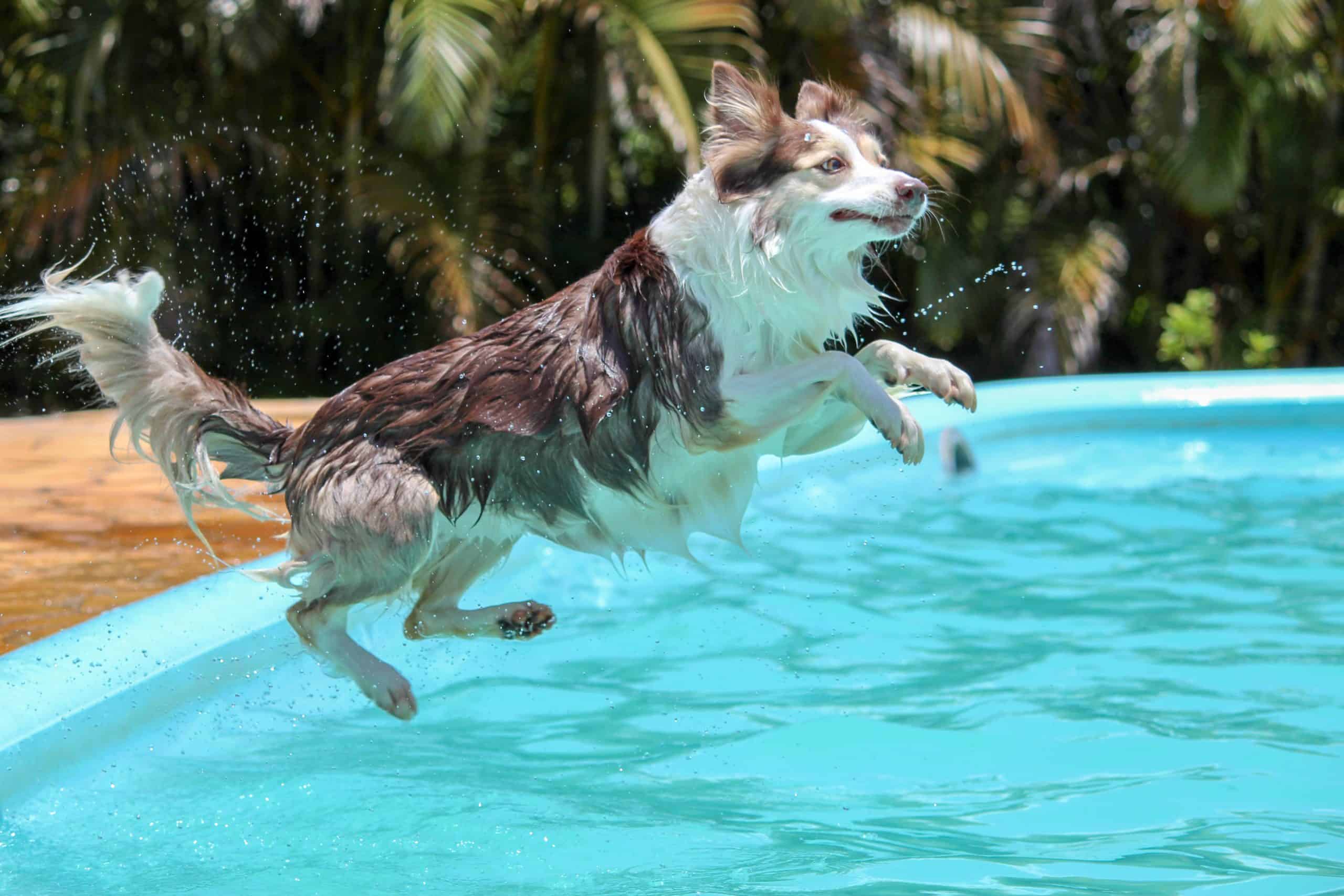
We all love water and here in South Florida we have so many dog-friendly beaches and waterfronts to enjoy, from Hobe Beach to the Keys. Just like some humans, not all puppies and dogs know how to swim at all. There are some who know how to navigate water as an instinct (some do it more gracefully than others), but they all depend on us to keep them safe. In addition to that, not all water activities are created equal. Read on to learn more about water safety for your dogs!
Saltwater safety & fun
No matter what type of water you are playing in, pool, salt, or lakes, drinking water is essential for them during a trip to the water. Bring fresh water and a collapsible bowl. Offer water often to keep them hydrated and to keep them from drinking the water they are swimming in. Salt water ingestion will cause massive diarrhea and dehydration. Make them take a break and drink fresh water every 30 minutes and every break they take on their own.
Boating with your dog is a big deal. They love the wind and the sun and the water and yes, the creatures in the water all look like a ball. . . or a Frisbee. Even if they don’t like the water and you don’t foresee them jumping in, we suggest they wear a lightweight vest with a handle on the back to make it easy to grab them should they go overboard and to help assist them back onto the watercraft you are on. These vests are comfortable and not hot. Your dogs can get wet and cool off fast.
Fishing with your pet can be something super special. They love to catch the fish especially if it’s on your hook already. Be aware, even once you rinse off and put your rod away they will enjoy the smell of the hook. The taste won’t be so enjoyable and a trip to the vet will ensue, so make sure you store your hooks and anything else you used to clean your fish as soon as you’re finished, and always keep an eye out for your pups’ curious sniffing.
Freshwater swimming: probably best to avoid
Algae is a natural (if slimy and gross, to us) part of the canal and lake ecosystem. It is not however, part of the flora or fauna of our dogs’ systems. Don’t risk swimming in that. If they do jump in, quickly bathe them with a dish soap such as Dawn blue or other shampoo that is available. Rinse well and repeat!
Blue-green algae is a greater risk for pets and humans alike. While blue-green algae (or cyanobacteria) does occur naturally, increases in nutrients from agricultural and urban run-off as well as warm summer temperatures increase the duration and intensity of these blooms. Blooms can be seen on the surface as foam or scum, but can sometimes be dispersed throughout the water. As algae in a cyanobacterial bloom die, the water may smell bad. Avoid exposure- skin contact, inhaling the spray, or swallowing by mistake, since these blooms may produce dangerous toxins. Pets and children are especially vulnerable, with some dogs reportedly dying from exposure. Blue-green algae can also live in brackish and salt water.
There is also the risk of predators in freshwater. We have alligators and water moccasins to watch out for. It’s better to keep your dogs safely in your boat or on the dock near freshwater, and keep your eyes on them.
Pool time safety and fun
Pools are so much fun to share with your pups, and you don’t even have to leave your backyard if you have one. Here are some of the best ways to make it safe and fun:
- Don’t force a dog in.
- Once you get in they will most likely want to join in the fun.
- Show them the steps, let them walk in with you or and carry them in if they show interest.
- When they start to paddle, direct them to the steps by calling their name and the word OUT (or other directed word of your choice) while you’re moving towards the exit steps. Redirect manually if you have a stubborn pup. Walk out with them and praise them like crazy! If they get in and want to swim more, let them but never take your eyes off them until they learn the way OUT.
- If they go to the side and try to climb out, redirect them with the OUT word, and come here – moving towards the stairs.
Doing this will build confidence and help them retain the way to get out if they fall in and no one is there.
There are great dog ramps made especially for the pool as well. Teach your pets to use this the same way you would the stairs. Older dogs who love to swim but find it hard to get out can benefit from this system as much as small and young pups. The ramp can help all animals out including birds or wildlife that may fall in.
The side of the pool will tear up their pads and shave their nails to the quick. Keep an eye on them and if they bleed, apply baking soda or powder, styptic or KWik stop as you do when a nail is clipped too short. Pads injuries will require some TLC and a vet visit, bandages, and possibly some antibiotics and pain control from your veterinarian. You should have all this in your K-9 Kit first aid Bark Pack.
Always keep your pool water balanced and chlorine levels low. Make sure you don’t let your pups or kids in right after you perform maintenance. Make sure you’re not allowing your pets to drink copious amounts of pool water. A gulp here or there won’t hurt them, but it’s best to avoid ingesting these chemicals. You should also rinse them off with fresh water after a dip. Finally, clean out your pups’ ears after pool time, especially those who are prone to ear infections.
Main takeaways:
However you choose to enjoy spending time with your best friend, remember their vest, fresh water, breaks, and keep them in sight. Rinse them off when you get home or bathe them if needed.
We would love to hear from you. If you have questions about your pets wellbeing you would like us to write about, or If you have tips you think would benefit others on water safety, please feel free to share them with us in the comments or email them to the Vet tech Division at Equipaws Pet Services – LoryN@equipawspetservices.com


